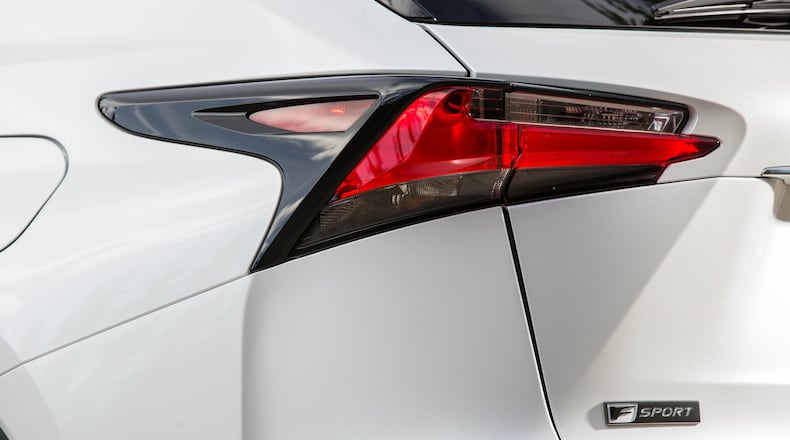During these times, I have followed cars I can barely see, and often wonder why they don’t have their taillights on. Then I discovered that automakers did not include taillights in the daytime driving lights system.
It can’t be that expensive to include this feature in the car’s computer code, and it would be a big safety feature.
Thank you for your Car Talk section in the paper. I look forward to reading it every week. -- Gary
RAY: You’re right, Gary. Daytime running lamps are “always on” lights that are usually incorporated with the headlights.
They’re not the same as headlights. They’re dimmer, and they go on and off automatically when the car is driven. They’re designed to give you extra visibility with oncoming cars. And most countries require them.
But not the United States. Most cars here have them anyway, because they’re a cheap and effective safety enhancement -- and because carmakers have to include them on their cars for Canada, Europe and most other countries anyway.
But there are no daytime running taillights that we know of. It would make sense, for those times you mention. Of course, drivers are supposed to turn on their full head- and taillights during times of poor visibility -- fog, rain, snow, dusk, dawn or sharknado. Most state laws require lights on under those conditions. But we know people forget. So including taillights in the DRL system would be a smart idea.
If you’re concerned about people seeing you, Gary, one thing you can do is simply leave your full lights on all the time. Most cars now kill the lights when you turn off the ignition. So the danger of forgetting to switch them off and waking up to a dead battery is exponentially lower than it was in years past.
That’ll give you some peace of mind that other drivers can see you in all conditions, and you won’t ever have to remember to turn on your lights when conditions change. Of course, it won’t help you see those other light-less vehicles. But with your headlights on, at least you’ll get a quick look at the make and model before you smack into their rear bumper.
‘Pilgrim’s’ car reflects progress in cleaner energy
Dear Car Talk:
I was out for my biweekly run, and I saw that one of my neighbors had parked some wheeled conveyance in his driveway that I didn’t recognize. It had no markings or emblems.
So I said to him, “Greetings, Pilgrim, what breed of Detroit Horse you got parked there in your drive?”
Well, he smiled and proudly told me: “This is a Tesla. I’m doing my part to lessen carbon emissions and pollution. I’m going green and doing my part to save the Earth for my grandchildren.”
Well, not knowing too much about anything and having a mouth that runs faster than my brain, I said: “Well ... unless you have a windmill farm or solar panels in your backyard, all the electricity generated around here is from burning fossil fuels. So you’re not really decreasing carbon emissions or helping the planet.”
Surprisingly, he let out a string of every expletive I’ve ever heard, a few new to me, expertly strung together that conveyed that he wasn’t in agreement with my evaluation.
Was I right? If I was wrong, Pilgrim, I do apologize, I stand corrected, and if I may say so, it has been a privilege having you as a neighbor and an honor knowing such an exemplary American and parent!
If I was right, Pilgrim, with the “green” you spent on that Tesla, you could have bought each of your grandkids a new Corolla. -- Mark
RAY: Mark, I’m afraid this “Pilgrim” bit isn’t the only thing of yours that’s out of date. Your knowledge of electricity generation is also behind the times.
Utilities have been adding natural gas and renewable sources to their generation mix for years now. So in the vast majority of the country, electricity comes from a mix of fossil and renewable fuels.
Some states are further along than others in this transition. But the percentage of solar and wind has increased markedly in recent years and is increasing all the time. Obviously, every solar panel or wind turbine that’s added to your state or regional grid makes electric cars that much cleaner. But they’re already cleaner than the equivalent individual gasoline engine -- by a significant margin.
Plus, it’s easier to control pollution at a handful of power plants than to control pollution in the engines and exhaust systems of millions of individual cars.
Any particular car can be running too rich, have a bad sensor or be driving with a worn-out catalytic converter. And that’s hard to police. Power plants, simply because there are fewer of them, are easier for regulators to keep an eye on.
Finally, electric cars remove air pollution from our most crowded places. So if you live in a city or the suburbs, where the sheer density of people and cars concentrates pollution, driving an electric car is a kind thing to do for your friends, family and neighbors.
So rig up the Santa Maria, Mark, sail back down to your neighbor’s house, apologize and invite him over for Thanksgiving.
Got a question about cars? Write to Ray in care of King Features, 628 Virginia Drive, Orlando, FL 32803, or email by visiting the Car Talk website at www.cartalk.com.
About the Author

